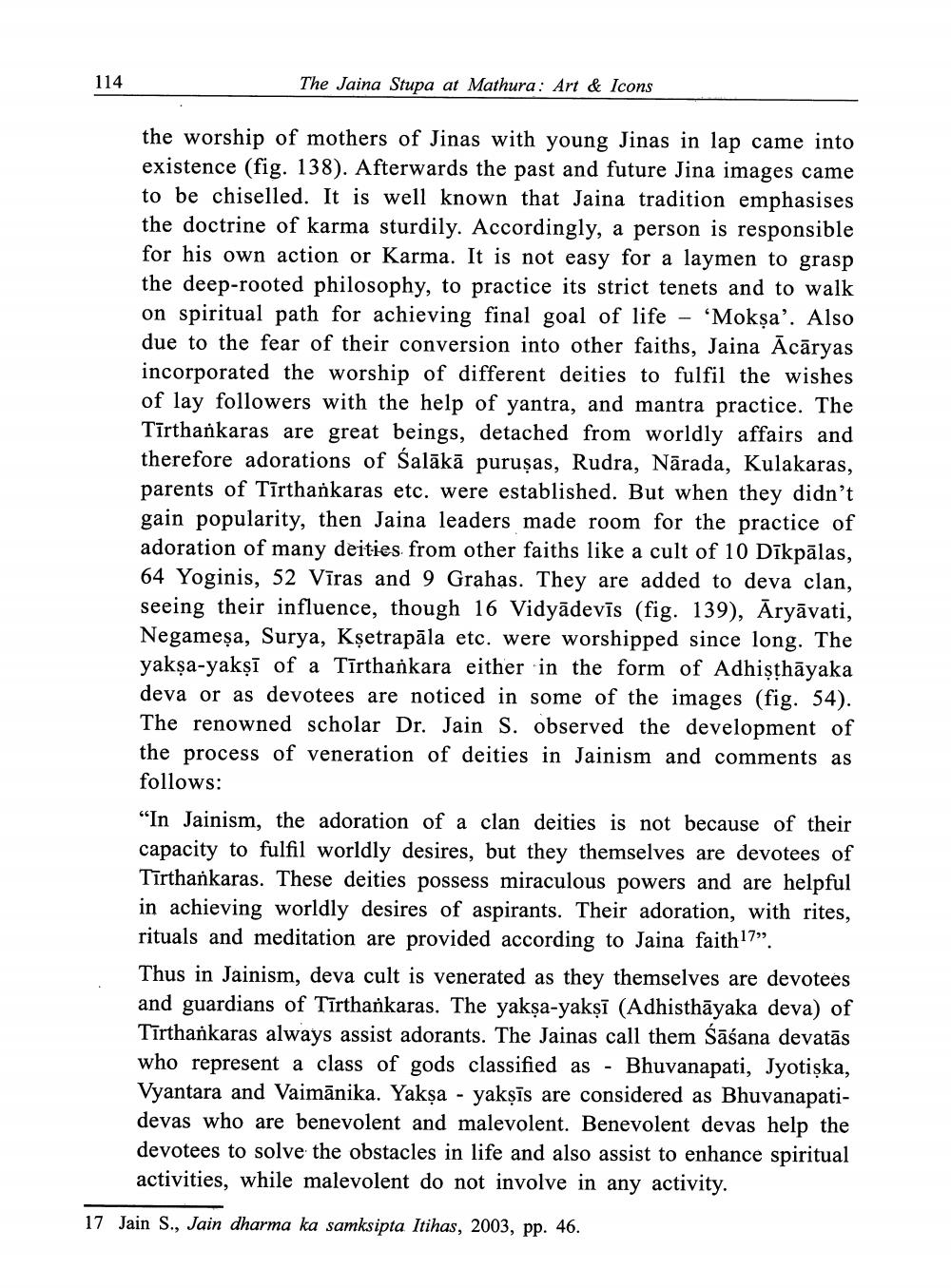________________
114
The Jaina Stupa at Mathura: Art & Icons
the worship of mothers of Jinas with young Jinas in lap came into existence (fig. 138). Afterwards the past and future Jina images came to be chiselled. It is well known that Jaina tradition emphasises the doctrine of karma sturdily. Accordingly, a person is responsible for his own action or Karma. It is not easy for a laymen to grasp the deep-rooted philosophy, to practice its strict tenets and to walk on spiritual path for achieving final goal of life - ‘Mokşa'. Also due to the fear of their conversion into other faiths, Jaina Ācāryas incorporated the worship of different deities to fulfil the wishes of lay followers with the help of yantra, and mantra practice. The Tīrthankaras are great beings, detached from worldly affairs and therefore adorations of Salākā puruṣas, Rudra, Nārada, Kulakaras, parents of Tīrthankaras etc. were established. But when they didn't gain popularity, then Jaina leaders made room for the practice of adoration of many deities from other faiths like a cult of 10 Dīkpālas, 64 Yoginis, 52 Vīras and 9 Grahas. They are added to deva clan, seeing their influence, though 16 Vidyādevīs (fig. 139), Āryāvati, Negameșa, Surya, Kșetrapāla etc. were worshipped since long. The yakşa-yaksī of a Tīrthankara either in the form of Adhisthāyaka deva or as devotees are noticed in some of the images (fig. 54). The renowned scholar Dr. Jain S. observed the development of the process of veneration of deities in Jainism and comments as follows: "In Jainism, the adoration of a clan deities is not because of their capacity to fulfil worldly desires, but they themselves are devotees of Tīrthankaras. These deities possess miraculous powers and are helpful in achieving worldly desires of aspirants. Their adoration, with rites, rituals and meditation are provided according to Jaina faith 17". Thus in Jainism, deva cult is venerated as they themselves are devotees and guardians of Tīrthankaras. The yakşa-yakṣī (Adhisthāyaka deva) of Tīrthankaras always assist adorants. The Jainas call them śāśana devatās who represent a class of gods classified as - Bhuvanapati, Jyotiska, Vyantara and Vaimānika. Yaksa - yakṣīs are considered as Bhuvanapatidevas who are benevolent and malevolent. Benevolent devas help the devotees to solve the obstacles in life and also assist to enhance spiritual activities, while malevolent do not involve in any activity.
17 Jain S., Jain dharma ka sanksipta Itihas, 2003, pp. 46.




